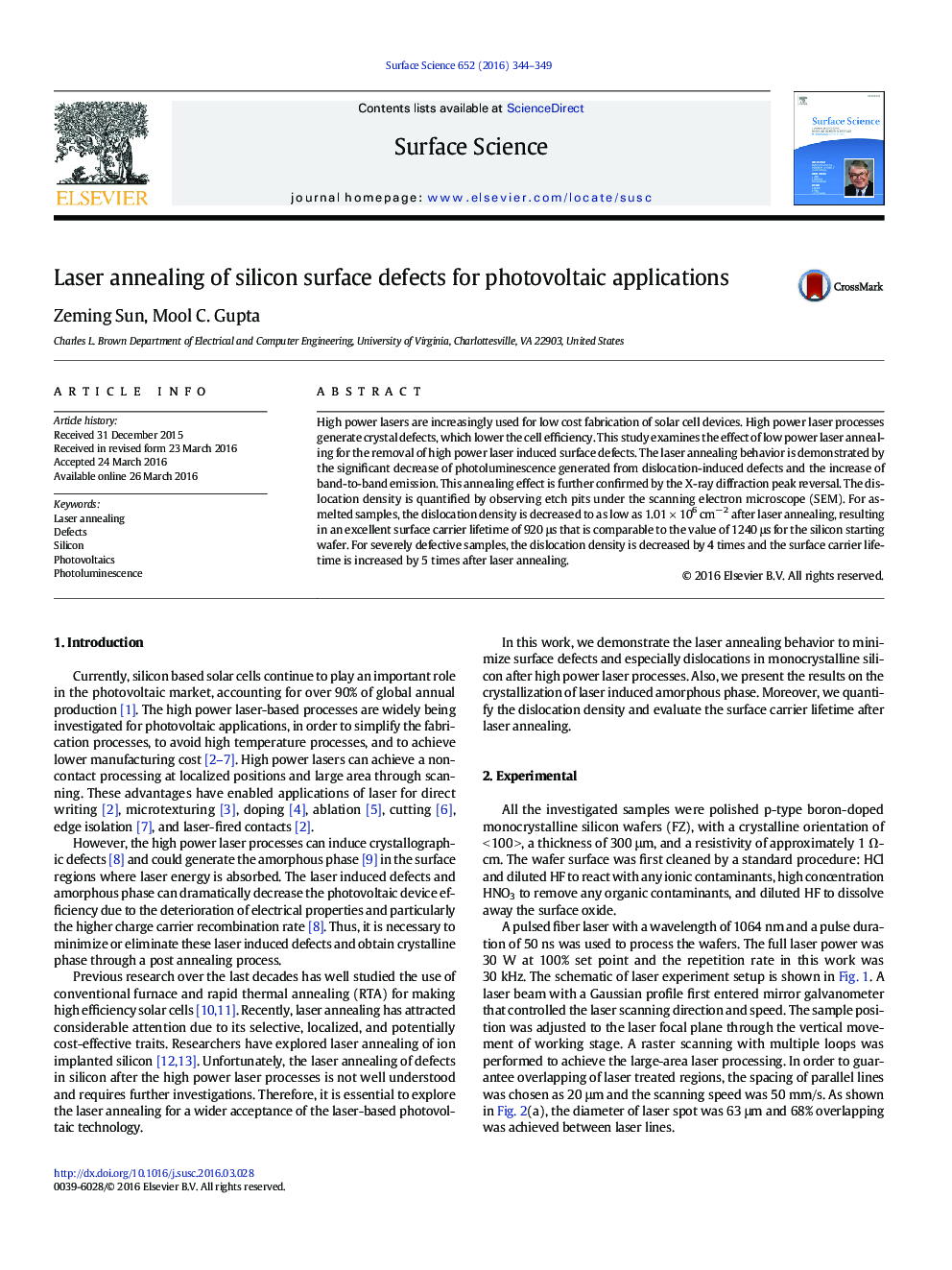| کد مقاله | کد نشریه | سال انتشار | مقاله انگلیسی | نسخه تمام متن |
|---|---|---|---|---|
| 5421339 | 1507878 | 2016 | 6 صفحه PDF | دانلود رایگان |
- High power laser induced defects can be removed by simply annealing with the same laser at lower powers.
- A comparative study of photoluminescence from band-to-band dislocations is used to monitor laser annealing process.
- X-ray diffraction peak reversal demonstrates the removal of dislocations in the laser-annealed silicon.
- Dislocation density determined by chemical etch pits is quantified and it dramatically decreases after laser annealing.
- Surface charge carrier lifetime decreases after high power laser processing and reverses back after low power annealing.
High power lasers are increasingly used for low cost fabrication of solar cell devices. High power laser processes generate crystal defects, which lower the cell efficiency. This study examines the effect of low power laser annealing for the removal of high power laser induced surface defects. The laser annealing behavior is demonstrated by the significant decrease of photoluminescence generated from dislocation-induced defects and the increase of band-to-band emission. This annealing effect is further confirmed by the X-ray diffraction peak reversal. The dislocation density is quantified by observing etch pits under the scanning electron microscope (SEM). For as-melted samples, the dislocation density is decreased to as low as 1.01 Ã 106 cmâ 2 after laser annealing, resulting in an excellent surface carrier lifetime of 920 μs that is comparable to the value of 1240 μs for the silicon starting wafer. For severely defective samples, the dislocation density is decreased by 4 times and the surface carrier lifetime is increased by 5 times after laser annealing.
306
Journal: Surface Science - Volume 652, October 2016, Pages 344-349
